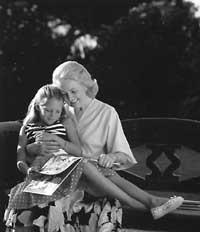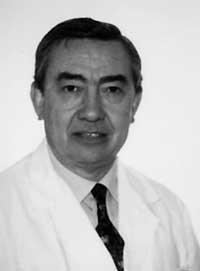If you are a woman, pay attention
8-10 years. Dental Inspection
All women should go through the dentist periodically; these inspections should start in childhood (8 or 10 years) and be repeated every six months or maximum every year until age 21. From there, it is convenient to continue every two years. Do not forget that many diseases have their origin in the mouth.
15 years. Breast Study

When the girl comes to the puberta, she should be taught how to do the same breast study. And since that is not taught in schools (at least as far as I know), it would be enough with that reason to visit the gynecologist. Of course, the doctor will explain other questions, but if you learn to study the nipples and nipples in front of the mirror, it would be enough to touch the breasts with the palm of the hand, with total tranquility and care, to see if there are lumps or tortuous. Although suitable for all women, this study is especially important for young people with a family history of breast cancer and as usual should be repeated monthly, whenever possible at the same time as the monthly cycle (or menstruation).
18 years. Cytology
Since almost fifty years ago the American cytologist George Papanicolau invented the diagnostic technique of the neck of the vagina, this technique has avoided numerous malignant tumors of the cervix. Why? Because a simple test can detect precancerous cells before moving to a more advanced (and therefore more serious) stage.
This cytology technique, consisting of taking a sample of the vagina with the help of special rods or rods, is a very simple test, without any damage or aggression for the woman. And through this test the doctor can know not only the quality of the cells of the uterus, but also the existence or not of bacterial infections, the degree of hormone of the woman or the presence of the human papillomavirus (PPV), which is transmitted through sexual relations and is closely related to cancer.
In view of this, the US Cancer Association's recommendation that all women should perform this test once a year is easily understood, whether they have sex or not. The age is, of course, approximate and must be advanced if the girl has sex before. In this case the test frequency will be determined and fixed by the gynecologist.
The only condition for taking the sample is that it does not match the rule, as in this case the test results would be altered. There are other techniques, such as colposcopy, which allows the gynecologist to see the vagina with enlargement lenses, but, although they are very suitable as a complement to cytology, they have not been routinely used among us.
20 years. Blood pressure

To control the state of the heart and arteries it is necessary to monitor the tension. If there is a coronary history in the family (for example, a heart attack, understandably said), it is advisable to check the values of blood pressure (and also cholesterol) since the age of 20, since it is known that genetic factors are currently of great importance among family members in the aforementioned problems. Annual basic control in obese, diabetic or contraceptive women. Also in those who have entered menopause. If you don't meet these conditions (you're not fat, you're not diabetic or menopausal, and you don't take pills), it's enough to control tension and cholesterol every three years.
35 years. Mammography
The importance of physical study in the diagnosis of breast cancer has already been mentioned. However, before any venom comes out in the chest, breast cancer can be detected by mammography. Therefore, a mammogram is recommended for women aged 35 to 40 years, once within that age range, while the “breast x-ray”, aged 40 to 50, should be performed every two years and annually for women aged 50 to 60 years. For women who have a family history of this type of cancer, the specialist should determine how often this test should be done.
40 years. Eye analysis
Women with visual impairment, diabetes, or hypertension should control vision annually. For those who see it well, the limit is 40 years and from that age it is recommended to go every two years to the oculist or optical.
40-45 years. Bone density
Special care during menopause includes blood and urine tests, cytology, mammography, uterine and/or breast ultrasound, and bone density measurement. Why this last test?
Osteoporosis is the pathological situation that causes the most problems among women in this age group. And the control of bone density will indicate calcification of the hip or spine. Genetic inheritance is important, but not decisive because of it: according to family history it may be possible and necessary to advance this study, depending on the time of onset of menopause.
- Breast cancer is the type of cancer with the highest incidence among women in EHKA. 68.3 out of 100,000 women.
- Among women affected by cancer, breast cancer has the highest mortality: 29.54 out of 100,000.
- Between 1986 and 1990, 3,488 new cases were detected. Between 1988 and 1992, 1,549 women died of breast cancer.
- The Breast Cancer Early Diagnosis Campaign, promoted by the Department of Health of the Basque Government, will involve women aged 50 to 64. A total of 7,932 in Alava, 59,285 in Gipuzkoa and about 100,000 in Bizkaia.
The way forward

The campaign launched by the Department of Health of the
Basque Government is good news. Early diagnosis of breast cancer is critical for the disease. Once and for all resources will be made available to women and, of course, women need to respond.
The measures contemplated by this project will allow, on the one hand, to diagnose many cases (the experience carried out in Navarra shows us that these types of campaigns are very effective). Secondly, we can cure many breast cancers, since the solution of this type of cancer depends largely on early diagnosis. And third, there will be no drastic solutions in most cases; if the disease is taken at the right time, the woman will not lose the breast and we can analyze other alternatives.
The age group that marked the campaign is, in any case, the most vulnerable part of the project. Our experience shows that most cases, which exceed 40%, fall outside this 50-64 range. Aware of this, I would like to make two main requests to women: on the one hand, to respond to this campaign, to use the resources available to them and, on the other, to become aware of it before reaching that age.
Buletina
Bidali zure helbide elektronikoa eta jaso asteroko buletina zure sarrera-ontzian











